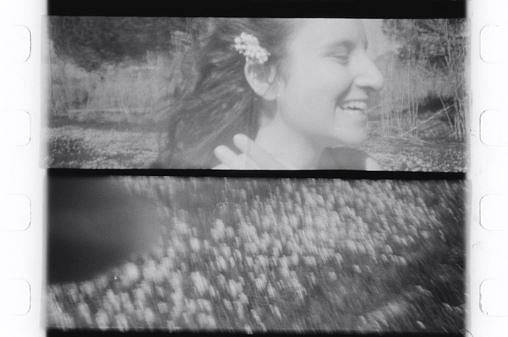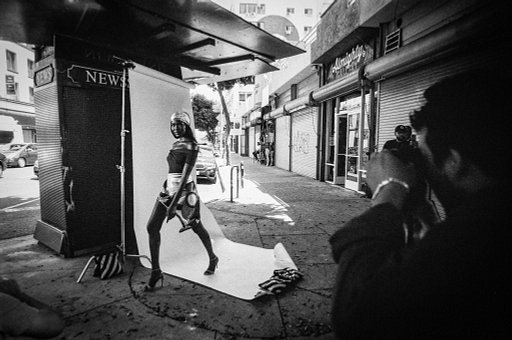Learning with Lomography: IEFC Students and the LomoKino - Laura Boronat
1 2 Share TweetFrom Bologna to Bandung, London to Shanghai – we have collaborated with universities and schools all over the world to give creative students the chance to enjoy their own Lomographic experiences. Through this series we see how the students brought their artistic visions to life with the help of a range of Lomography tools.
Today we’re in Barcelona for a very special collaboration between IEFC and Lomography. The participants were invited to develop a short movie using our LomoKino, Lady Grey B&W films and the DigitaLIZA Max scanning kit. In this article we meet Laura Boronat and take a look at her wonderful project.
Hi! Welcome to our Online Magazine! Could you introduce yourself to our readers?
Hi! My name is Laura Boronat and I’m from Barcelona, where I study photography at IEFC (Institut d’Estudis Fotogràfics de Catalunya).
Tell us about your photographic background. When did you start your journey into the world of photography?
Photography has always been present in my family, and since I was little I took my father's digital camera and started taking pictures. I have always liked arts such as drawing and painting, and I was always convinced that I would do Fine Arts, until about two years ago I decided to study photography. My first contact with analogue photography was at the Experimental Photo Festival in 2021, and since then it is my main source of artistic creation. I love it!
When the institute informed you about this special experimental cinema project on film, what was your reaction?
I immediately signed up! All these are opportunities to try new techniques, new materials and to expand your knowledge and capabilities. That is why I think it is important to participate in these projects that the institute proposes.
For this video you used our LomoKino along with a Lady Grey B&W 400 ISO film. What features did you appreciate the most of this retro, hand–held movie maker?
Using the LomoKino was fun! It was almost like playing with a toy. When I tried the camera, it was an afternoon of experimentation, and playing with the movement. From leaving the camera still and letting the subject move, to leaving the subject still and being the one performing the movement. I was pleased to see that turning the crank faster or slower also produced different results. I found it very interesting, as I didn't know it was possible for the camera could take two pictures in one frame.
How did you choose the music and audio for your video?
When I first started thinking about ideas for making the video, I wanted to make something very springy and cheerful. But when I shot the photos and developed the roll, I saw another possibility. Using the right music and sound effects I could create a more mysterious or creepy environment. This shows how important the soundtrack is, and how it can completely change the intention of the story.

How satisfyingly was it for you to shoot a short movie on film? Would you do it again?
Every time I can, I like working in analogue. Personally, it seems to me that is a much more magical and special process, where you have a limited number of shots and you have to think much more about every photograph you take. However, I've never done a short movie on film before, and I'll definitely do it again. It requires a lot of patience, especially in the post production, but it's worth it. In this case, I liked having to send a message without dialogue and without continuous movement, and to have to synthesize all the information more.
For the scan you also used our DigitaLIZA Max scanning kit. How did you get on?
The DigitaLIZA Max scanning kit has been very practical. Apart from scanning the roll for this work, which I used with my camera, I also used it to scan other rolls I had at home, and I did it with my phone more quickly.
Tell us about the concept behind this beautiful video.
My goal when I shot the roll was to create a more visual setting and video, without having such a marked story. As I said, I wanted it to be cheerful and springly. After shooting, developing the roll and seeing the sequence of pictures on my computer, I saw that something was missing. It was an aesthetically beautiful video that worked very well, but it needed something that stuck more to the viewer. So, along with a teacher's help, we thought that it would have been interesting to introduce an audio that completely changed the purpose of the video.
For this project did your research lead to any interesting discoveries that you would like to tell us about?
So, I asked the title of video, "What if you go for a little walk and never come back?" and let each viewer put together their stories about what might be going on. Creating this contradiction of an audiovisual that apparently seems cheerful and sweet but contains elements that distort that, I search for confusion and discomfort.
Do you have any interesting projects or collaborations planned related to analogue photography?
Working on this little project has made me more interested in analogue video. And looking around my house and my grandparents house I found not one, but two Super 8 cameras! So my goal is to do more research on this world, see if they work and try them.
I'm not working on any particular analogue project right now, but I have to start doing the PFG very soon and I'd like to do it in analogue, at least some part of the work. This summer I tried some new experimental analogue techniques, such as chlorotype, and I want to introduce some of those techniques in my project.
Thank you to Laura for sharing your work with us. You can find out more about IEFC on their Instagram profile and website.
written by melissaperitore on 2023-11-09 #gear #culture #videos #spain #lomokino #iefc #digitaliza-max #lomography-at-art-school #learning-with-lomography #scanned-with-lomography

















One Comment